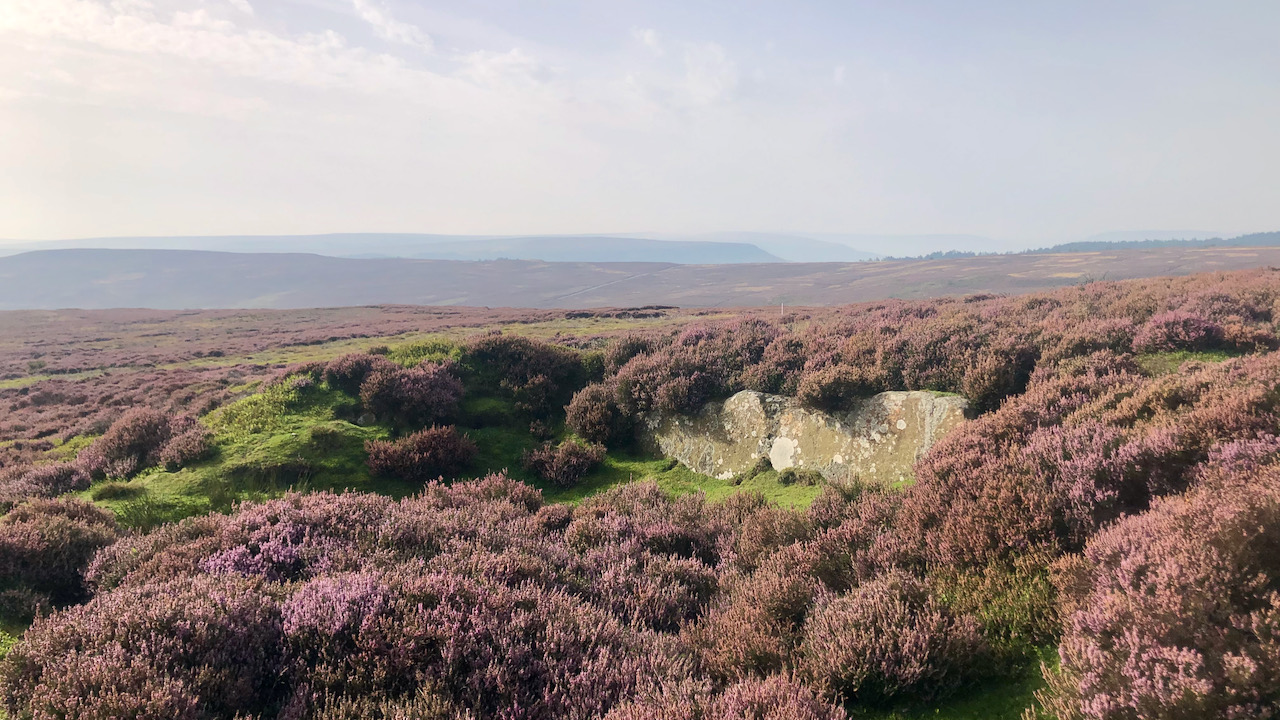Here on Codhill, on Gisborough Moors, is one of a pair of small sandstone quarries. Probably 19th-century1NYM NP HER Nos: 5416/5434.. It couldn’t have produced any significant amount of rock, likely used for some dry stone walling over at Sleddale Farm. Really, there is not much else to say about this feature.
Now, the day started off all hot and muggy, with yesterday’s morning mist nowhere in sight. But there was this thin blanket of high-level clouds that made the sun hazy. And that glorious heather bloom of the last few weeks? Well, now it’s past its prime.
And take a look at the moors stretching out into the distance. Percy Rigg, Ingleby Moor, Urra Moor. You’ve probably laid eyes on similar views a thousand times without giving them a second thought. Notice the closest hill looks darker than the one sitting behind it, and that one is lighter still, all the way to the horizon. What’s causing this effect? Well, it’s due to atmospheric optical scattering, an effect named after the British scientist Lord Rayleigh2‘Rayleigh Scattering’, Wikipedia<https://en.wikipedia.org/wiki/Rayleigh_scattering> [accessed 7 September 2023]. It’s far too complicated to explain here, but it also explains why the sky’s blue and the horizon’s always a shade whiter, even on a day when the sky is cloudless.
- 1NYM NP HER Nos: 5416/5434.
- 2‘Rayleigh Scattering’, Wikipedia<https://en.wikipedia.org/wiki/Rayleigh_scattering> [accessed 7 September 2023]

Leave a Reply